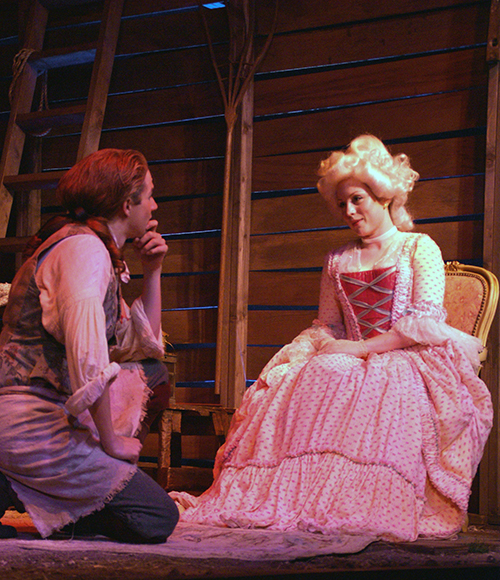Playwrights’ Notes
 |
| Matthew Leddy, Vanessa Thompson Photo from the New Theatre premiere |
I began writing Likeness in a workshop led by brilliant playwright and poet Dan O’Brien at Primary Stages in New York. Dan recommended I submit the piece to The New Harmony Project, which looks for works that seek to uplift the human spirit. Likeness was chosen for full development. The time I spent there saw enormous growth. After its world premiere at New Theatre in Miami, the play found further focus, and following a reading last fall at Federal Hall on Wall Street, thanks to the National Parks Service, I took another pass for clarity and brevity. Each performance or reading informed in its own way.
As I write this for the imminent publication, half of our nation is reeling from the results of the recent presidential election. Here’s why that is significant to me: Likeness tells the story of Edmund Farraday, a self-taught young artist hired by a tyrannical landowner in colonial Boston to paint his teenaged daughter’s portrait in hopes of luring a British nobleman into marriage. Mr. Westerley sees his daughter’s value only in her attractiveness, but has no qualms asking the artist to enhance it on the canvas. His reputed wealth may not be what it seems. He spouts confidence in the Crown’s hold on the colonies, but plans an exit strategy via his daughter. He abuses underlings and pays scanty wages. He makes fun of Farraday, the estranged son of a lawyer, for his “high-flown language.” He attempts to refuse payment when the job is not completed “to his satisfaction.” A woman of dubious morals constantly hangs off of his arm. He calls her his niece, and defies anyone to contradict him.
I revised Likeness during the Occupy movement to more closely examine our society’s resemblance to that which we fought to reject in 1776: most of us at the mercy of and in service to a wealthy few, education discouraged for the working class and mocked among the middle class, and factions within the lower ranks set against one another through the deliberate magnification of their differences.
In Likeness, Farraday does not like his subject, Miss Westerley. He sees her as the vain, spoiled child of a tyrant. A servant brought in to assist him, Marcus, tries to open the artist’s eyes, and eventually circumstances lead to an understanding not of their differences, but of their similarities: both are unloved by their fathers who undervalue and disrespect them, and both are seeking to make a good mark on the world.
Today I see an abundance of finger-pointing among those of us devastated by the triumph of hate and greed we have witnessed: third party voters; white liberals who couldn’t prevail on their families, or didn’t recognize the depth of racism; men who, in their heart of hearts, do not trust women. I have always meant to show the “likeness” of our current society to that which we rebelled against. But now I will go further. When these disparate allies, Farraday, Miss Westerley, and Marcus, come together in mutual respect, understanding, and, yes, love, they triumph over tyranny. It’s fiction, but we can make it fact. Likeness is my hope in a dark, dark time. Thank you to Blackbird from the bottom of my heart for giving me the platform to express that now. ![]()